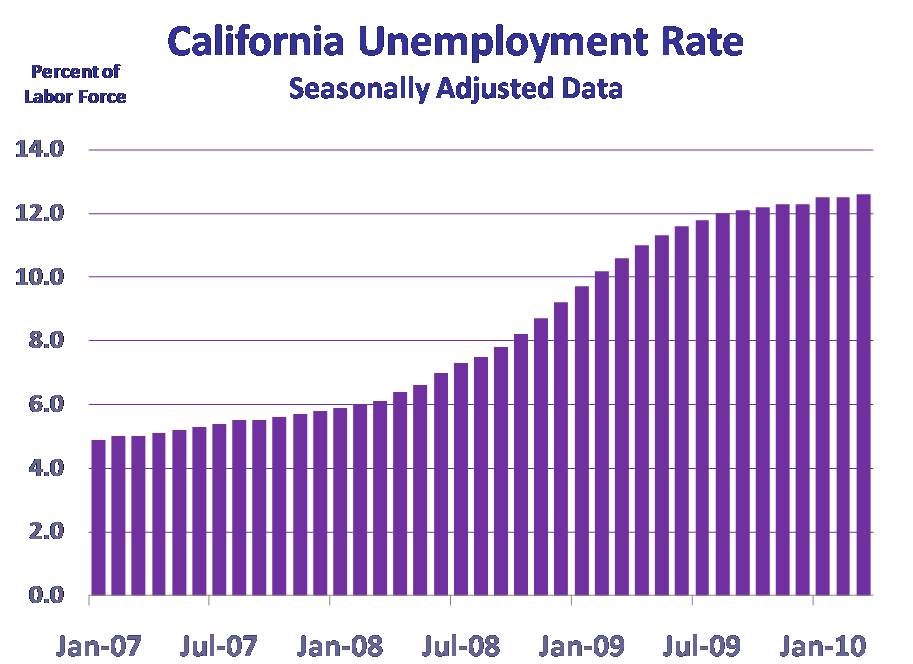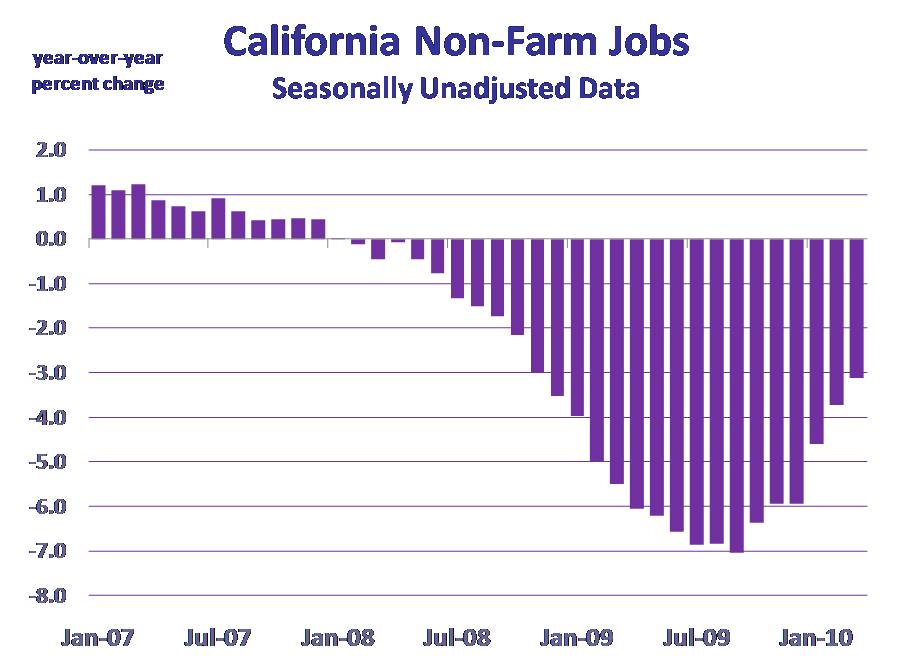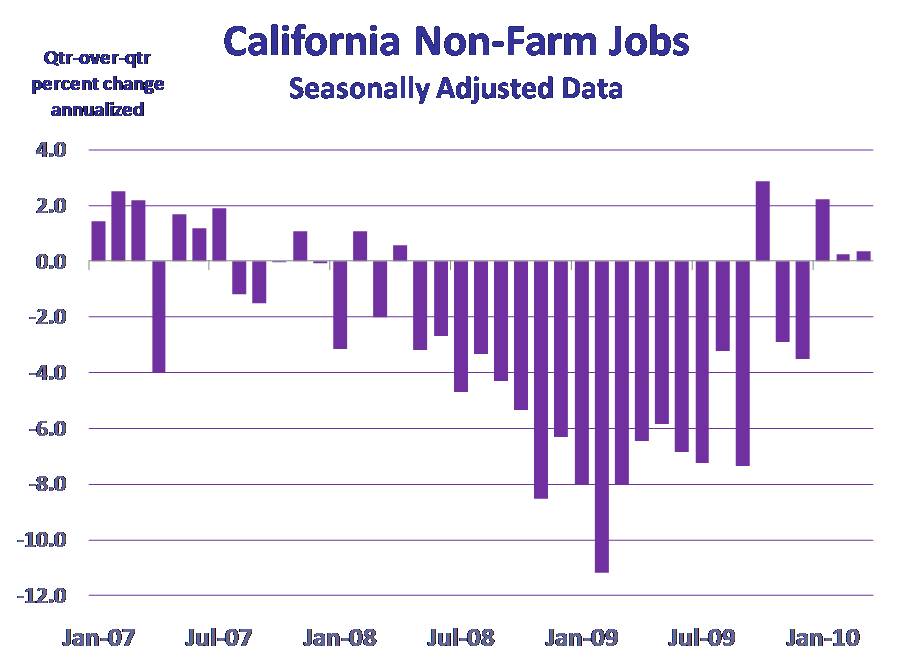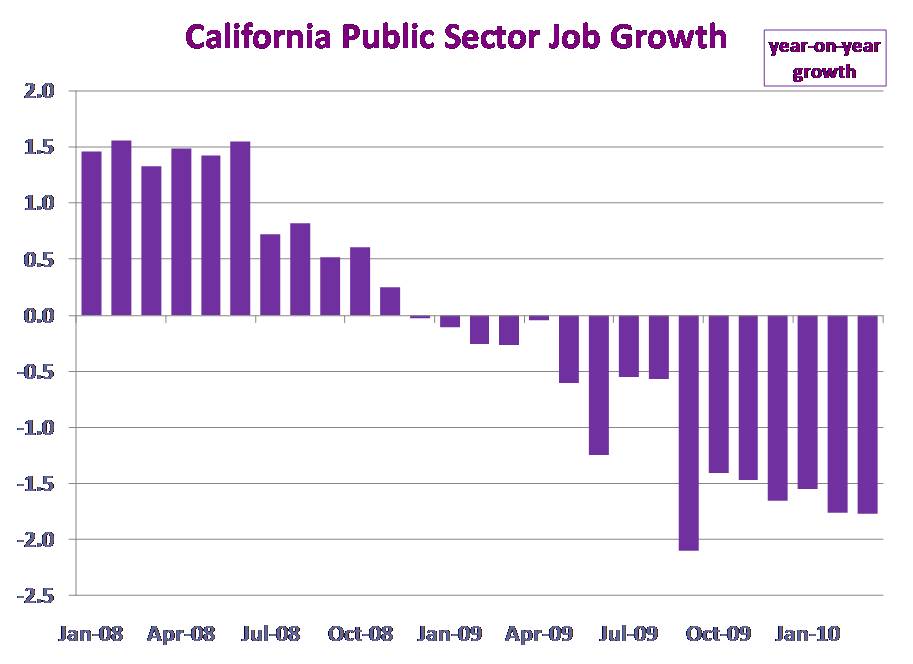CERF Blog
Dan Hamilton and Kjersti Framnes
The California March unemployment rate increased to 12.6 percent from 12.5 percent in February. Since August of 2009 the unemployment rate has climbed 60 basis points, and there has not been any interim month of recovery. The unemployment rate would likely be even greater if not for net domestic out-migration.
The year-on-year job growth rate continued improving, that is to say the declines are not as big, extending a trend that started in January 2010. Improvements in the year-on-year job growth rates since January have been fairly consistent. The problem is that we started from losses of seven percent. Last year’s seven percent job losses were likely to be the worst in the California’s job market history. The year-on-year growth rate declines were 3.7 percent in February, and 3.1 percent in March.
Month-on-month job growth, the more volatile measure, jumped 570 basis points from December 2009 to January 2010. After the January gains, the month-on-month measure slowed to barely positive numbers in February and March.
The question of recovery is in the air, and with the March California jobs report we might hope to claim that we are past the worse of the recession. However, even though the job growth decline is improving, the level of jobs is still falling relative to last year. If the rate of improvement in the year-on-year job growth rate continues, we would not arrive at positive job growth until August 2010. As well, the unemployment rate will continue to remain high for some time.
A negative risk factor is the public sector. Despite the fact that the state has a very large structural budget deficit, public sector job losses have been much smaller than for the private sector thus far in this cycle. Public sector jobs could be the other shoe to drop. If this did happen, it would lengthen and weaken the return to growth.





